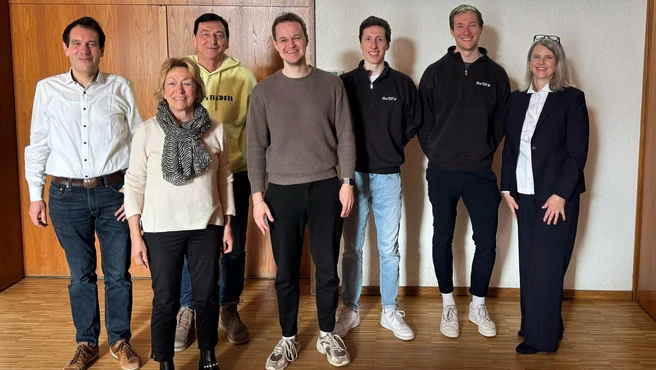As part of a project seminar led by Professor Rudi Zagst and doctoral student Tobias Lausser, three master’s students have developed an innovative software solution for the ecologically and economically sustainable use of church real estate.
The project of the Chair of Financial Mathematics at the TUM School of Computation, Information and Technology was developed together with the Catholic parishes of St. Maria Suso and Söflingen in Ulm as part of the “Räume – Kirche – Zukunft” (Spaces – Church – Future) initiative.
Change as a Challenge and an Opportunity
Church communities in Germany are facing far-reaching structural changes. Many buildings owned by the church are outdated in terms of energy, are underutilized, and cause high operating costs. A strategic reorientation is required to counter these developments.
The aim of the project was to create a data-supported basis for decision-making in order to tackle these challenges and support parishes in sustainable real estate planning.
Data-based Scenario Planning
The solution developed combines a Python-based analysis module with an interactive view in the Microsoft Power BI data visualization platform. At its core is a mathematical optimization model (Mixed-Integer Linear Programming) that generates various transformation scenarios for church buildings and evaluates them in terms of costs, space utilization, and climate impact. The modular architecture of the software allows flexible adaptation to new data, buildings, or usage concepts and thus supports an iterative planning process under uncertainty.
If, for example, a core refurbishment and redesign of a community center is planned, the aim will be to cover the space requirements in the community as optimally as possible. There are various options for realizing the building construction. They differ in terms of energy efficiency, size, and flexibility of the space. Some designs also provide for premises to be rented out to a youth organization or the kindergarten next door. The software compares the various options and shows how they vary in sustainability, costs, and use of space.
Two Parishes, four Buildings, nine Scenarios
In the case study, a total of nine transformation scenarios were developed for four buildings in two parishes in Ulm. The results show:
- Up to 26% savings in running costs
- At least 97% of all events remain feasible in each scenario
- Amortization of initial costs after 0 to 49 years, depending on the scenario
Three scenarios that offer a balanced combination of cost-effectiveness, space utilization, and climate friendliness proved to be particularly advantageous.
Sustainable Use of Space
The project by students enrolled in the Finance and Information Management (FIM) master’s degree program shows how data-based decision-making processes open up concrete scope of action for church communities. The methodology developed is not limited to the communities studied, but can also be transferred to other church contexts with similar challenges. It thus contributes to the sustainable transformation of church infrastructure – in terms of the common good, climate protection, and sustainable use of space.
